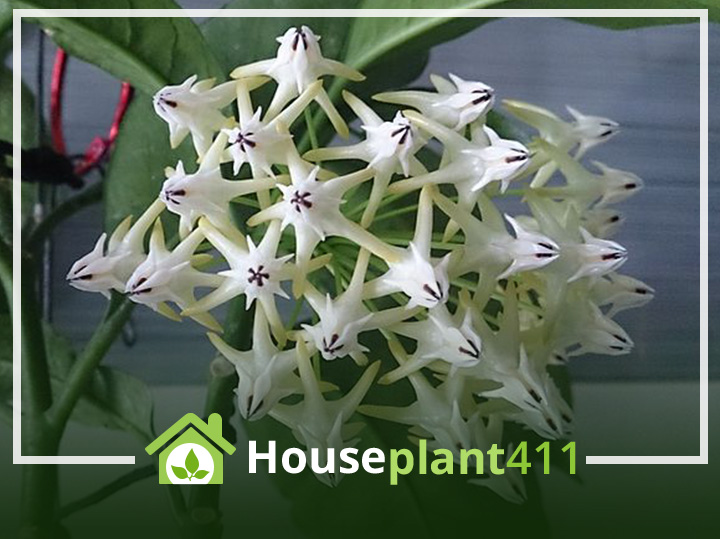The Hoya Shooting Star plant is native to Thailand and Malaysia. White blooms on a Hoya Shooting Star plant appear in large clusters, with the waxy petals leaning back behind the center of the flower, like shooting stars. There are over 200 species of the easy to grow almost indestructible hoya plant. These plants are often referred to as Wax Plants because of the waxy nature of their leaves and flowers. Hoya plants grow well and produce more flowers when hanging in front of a window that gets bright, indirect light. Even a houseplant novice will be successful growing a Hoya plant if they don’t over water and cause stem and root rot.
Plant Care
Light
Hoya Plants do best and bloom more in very bright light. They are one of the few indoor houseplants that can even thrive in morning, direct sun. Although a Hoya Shooting Star plant can adapt to lower light, they grow slower and do not produce the fragrant porcelain- like flowers that are so beautiful.
Water
These are succulent plants and need to completely dry out before being watered. Hoya Shooting Star plants do thrive on neglect, but need additional water when in bloom.
Fertilizer
Feed monthly with a balanced houseplant food diluted to 1/2 the recommended strength when he plant actively growing.
Temperature
Hoya Plants can adapt to any temperature but prefer 70°-80°F ( 21.1°-26,7°C) during the day and 60°-65°F (15.5°-18.3°C) at night.
Humidity
Provide basic household humidity or lower for a Hoya plant.
Flowering
A Hoya Shooting Star plant produces beautiful clusters of fragrant flowers in white and yellow. Each Hoya flower has five waxy petals. New flowers develop on the old flower stems, so never cut off the old stems.
Pests
Hoya plants are prone to plant pests such as mealy bugs, spider mites, and aphids. If infected, spray the entire plant, reaching every little twisted section if possible, with the Green Solution ( directions on how to make this non-toxic solution in the Glossary of the website).
Diseases
The main Hoya plant diseases are Botrytis, a fungus that causes grayish areas on the leaves and Stem and Root Rot caused by over-watering. Details on how to identify and treat these diseases in the Glossary of the website.
Soil
Use a well-aerated fast-draining potting soil for a Hoya plant. Add a little sand to the soil to loosen it up if the soil seems heavy..
Pot Size
Pot size for a Hoya plant should be no larger that 1″-2″ bigger than the root ball and must have drip holes in the bottom so excess water can drain out.
Pruning
Never cut off all of the old stems of a Hoya Shooting Star Plant since this is where the new flowers develop.
Propagation
Hoya Plants are easy to propagate using stem clippings from the new vines. Read more about propagation techniques in the Glossary of the website.
Poisonous Plant Info
Although not considered poisonous, Hoya Plants can make dogs and cats ill if they eat a large number of leaves..
FAQ
Hoya flower buds dry up and fall off if the plant gets very dry. Hoya flower buds get spongy and fall off when the plant is over-watered.
The main reason mature Hoya Plants don’t bloom is because they are not getting enough light.
Hoya plants bloom very well under fluorescent light.

